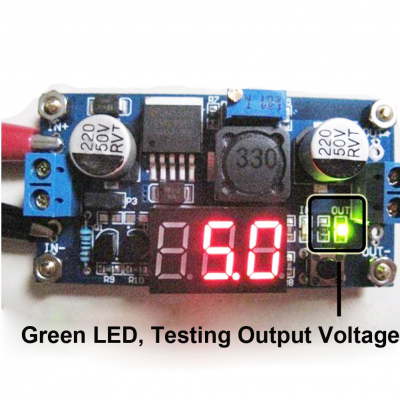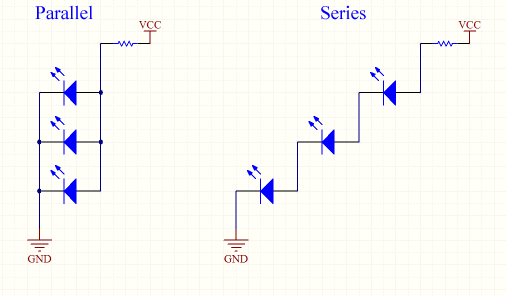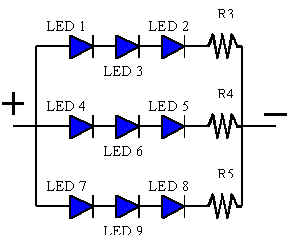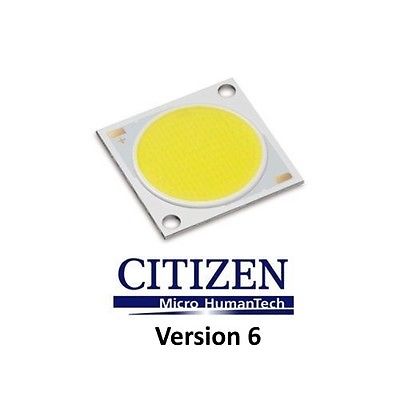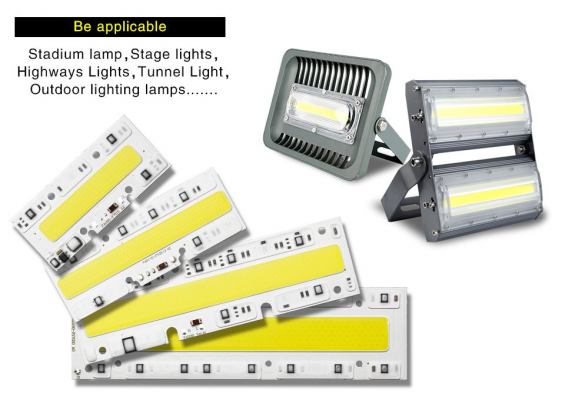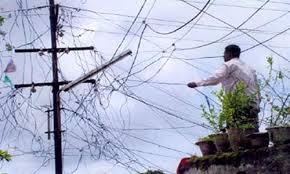I got a Buck Converter, Now What?
Posted by MechaBits
|
I got a Buck Converter, Now What? August 05, 2017 07:01PM |
Registered: 8 years ago Posts: 1,671 |
|
Re: I got a Buck Converter, Now What? August 05, 2017 07:13PM |
Registered: 11 years ago Posts: 5,780 |
I have used small buck converters to provide 12V (from a 24V main power supply) to run fans and LEDs in printers.
Ultra MegaMax Dominator 3D printer: [drmrehorst.blogspot.com]
Ultra MegaMax Dominator 3D printer: [drmrehorst.blogspot.com]
|
Re: I got a Buck Converter, Now What? August 05, 2017 07:40PM |
Registered: 8 years ago Posts: 1,671 |
I have my LED's on seperate supply through a dedicated driver, but I suppose I could do away with that if I wanted everything to run off the one outlet.
This is the one I got, not sure how I keep an eye on the amps going in, assume I have to keep an eye on the load side. I dont have 24v or 36v power supplies yet, which the converteer makes more sense to use on, but
are they any good for going up from 12v
Edited 1 time(s). Last edit at 08/05/2017 09:25PM by MechaBits.
This is the one I got, not sure how I keep an eye on the amps going in, assume I have to keep an eye on the load side. I dont have 24v or 36v power supplies yet, which the converteer makes more sense to use on, but
are they any good for going up from 12v
Edited 1 time(s). Last edit at 08/05/2017 09:25PM by MechaBits.
|
Re: I got a Buck Converter, Now What? August 06, 2017 12:16AM |
Registered: 8 years ago Posts: 1,671 |
|
Re: I got a Buck Converter, Now What? August 06, 2017 12:18AM |
Registered: 11 years ago Posts: 5,780 |
They are typically very efficient, so power in will only be slightly higher than power out.
Buck converters reduce voltage. They are good for powering your old 12V parts,like fans, LEDs, and maybe hot-end heaters, if your printer has a 24V supply. I believe the one you got is adjustable, so it could be useful for powering other LV stuff even from your 12V supply.
Edited 1 time(s). Last edit at 08/06/2017 07:24AM by the_digital_dentist.
Ultra MegaMax Dominator 3D printer: [drmrehorst.blogspot.com]
Buck converters reduce voltage. They are good for powering your old 12V parts,like fans, LEDs, and maybe hot-end heaters, if your printer has a 24V supply. I believe the one you got is adjustable, so it could be useful for powering other LV stuff even from your 12V supply.
Edited 1 time(s). Last edit at 08/06/2017 07:24AM by the_digital_dentist.
Ultra MegaMax Dominator 3D printer: [drmrehorst.blogspot.com]
|
Re: I got a Buck Converter, Now What? August 06, 2017 01:43AM |
Registered: 8 years ago Posts: 5,232 |
|
Re: I got a Buck Converter, Now What? August 06, 2017 05:43PM |
Registered: 8 years ago Posts: 1,671 |
Thanks guy's kinda clarifies(o'lampe explains why i might not need for the printers just yet), it's the V & A & W that confuzzles me, as a fan is 12v but low amp, I wonder about putting them in series, and how the first would get all the amps for the chain, but was thinking of getting some lipo's for the gimbal and might need to monitor the power there but with the right kit to start with the converter's probably not much use there either. The other use was for tapping the power off a 36v led supply and running 12v fans from that, (though I think the PSU delivers more than 36v, as it powers 5x 36v led chips).
Or to power the smaller arduino uno, either way it has to come in handy for something other than the flashing lights,
Or to power the smaller arduino uno, either way it has to come in handy for something other than the flashing lights,
|
Re: I got a Buck Converter, Now What? August 06, 2017 06:12PM |
Registered: 11 years ago Posts: 5,780 |
A boost converter that can power an underspecced bed heater would cost more than just buying a new power supply. That would be a silly use for a boost converter.
You can connect two 12V fans in series and run them from 24V. There's no guarantee they'll split the voltage evenly, but it will be close enough. A few volts either way won't matter much.
When you put things in series, they all get the same current. When you wire them in parallel, they all get the same voltage.
White LEDs are typically 3.6-3.8V each. 5 in series would require an 18-19V supply. If your LEDs actually need 36V, there's either a bunch of them in series or some sort of power converter (usually constant current to drive the LEDs) inside them.
Ultra MegaMax Dominator 3D printer: [drmrehorst.blogspot.com]
You can connect two 12V fans in series and run them from 24V. There's no guarantee they'll split the voltage evenly, but it will be close enough. A few volts either way won't matter much.
When you put things in series, they all get the same current. When you wire them in parallel, they all get the same voltage.
White LEDs are typically 3.6-3.8V each. 5 in series would require an 18-19V supply. If your LEDs actually need 36V, there's either a bunch of them in series or some sort of power converter (usually constant current to drive the LEDs) inside them.
Ultra MegaMax Dominator 3D printer: [drmrehorst.blogspot.com]
|
Re: I got a Buck Converter, Now What? August 06, 2017 07:35PM |
Registered: 8 years ago Posts: 1,671 |
Thanks for clarifying Mark(is Parallel more like a star config, ie one hub point going onto each device, which is how i tend to do it at the moment), yes the LED's do have a number(lots) of tiny little emitters on the chip, the PSU is 240w 1050mA
actually just checked and maybe not 36v but 240v / 5x but dimable(i probably have my numbers wrong). Though in the examples I've seen the fans are normally on a seperate supply, probably for a good reason,
also considering this one
[www.tme.eu]
or some other cheaper alternative.
Maybe topic should be moved to electronics.
Edited 3 time(s). Last edit at 08/06/2017 07:55PM by MechaBits.
actually just checked and maybe not 36v but 240v / 5x but dimable(i probably have my numbers wrong). Though in the examples I've seen the fans are normally on a seperate supply, probably for a good reason,
also considering this one
[www.tme.eu]
or some other cheaper alternative.
Maybe topic should be moved to electronics.
Edited 3 time(s). Last edit at 08/06/2017 07:55PM by MechaBits.
|
Re: I got a Buck Converter, Now What? August 06, 2017 07:55PM |
Registered: 11 years ago Posts: 5,780 |
Here are examples of wiring LEDs in series and parallel:
In general, you want constant current for LEDs because their junction voltage will vary a lot with temperature. With constant current, the light output will remain constant as temperature varies.
However if you wire them in parallel or some combo of series and parallel (most common) it is generally safer to use a constant voltage supply. Here are LEDs wired in series and parallel:
If you used a constant current supply, and one of the LEDs fails (they die open) the current source will force the total current through two strings of LEDs instead of 3, making them brighter, and maybe destroying them in the process. If you use a constant voltage supply, and one or two LEDs fail, the others will continue to work at a constant brightness. The resistors in the series/parallel strings are there to force the current to be split equally among the parallel strings, ensuring that all the LEDs appear equally bright. The resistors sort of make the voltage source look a little more like a current source to the LEDs.
If you buy a constant current supply, make sure the current is either adjustable or matches what you need for your LEDs. 1W LEDs typically use 350 mA. If you connect them to a 1000 mA current source they will burn up in a few seconds.
Edited 2 time(s). Last edit at 08/06/2017 07:59PM by the_digital_dentist.
Ultra MegaMax Dominator 3D printer: [drmrehorst.blogspot.com]
In general, you want constant current for LEDs because their junction voltage will vary a lot with temperature. With constant current, the light output will remain constant as temperature varies.
However if you wire them in parallel or some combo of series and parallel (most common) it is generally safer to use a constant voltage supply. Here are LEDs wired in series and parallel:
If you used a constant current supply, and one of the LEDs fails (they die open) the current source will force the total current through two strings of LEDs instead of 3, making them brighter, and maybe destroying them in the process. If you use a constant voltage supply, and one or two LEDs fail, the others will continue to work at a constant brightness. The resistors in the series/parallel strings are there to force the current to be split equally among the parallel strings, ensuring that all the LEDs appear equally bright. The resistors sort of make the voltage source look a little more like a current source to the LEDs.
If you buy a constant current supply, make sure the current is either adjustable or matches what you need for your LEDs. 1W LEDs typically use 350 mA. If you connect them to a 1000 mA current source they will burn up in a few seconds.
Edited 2 time(s). Last edit at 08/06/2017 07:59PM by the_digital_dentist.
Ultra MegaMax Dominator 3D printer: [drmrehorst.blogspot.com]
|
Re: I got a Buck Converter, Now What? August 06, 2017 08:26PM |
Registered: 8 years ago Posts: 1,671 |
Hmm definitely something to think about(and double check), the examples I saw the Citizen Chips where powered one to the other(like Christmas tree lights) in a chain(not the actual chip led's) I dont want one popping and killing the others, so assume these PSU's where chosen to do the right job?
Something I think I learned from your Dwg's is GND is Neg? but not in 240v mains.
Also considering these as the are just mains powered & cheap less than £10 for 150w no PSU expense
Something I think I learned from your Dwg's is GND is Neg? but not in 240v mains.
Also considering these as the are just mains powered & cheap less than £10 for 150w no PSU expense
|
Re: I got a Buck Converter, Now What? August 06, 2017 08:35PM |
Registered: 11 years ago Posts: 5,780 |
Not sure about the citizen parts, but the ones in the bottom have power supplies on the circuit boards. They probably just run from line voltage.
In DC systems, gnd is usually what the negative terminal of a battery or power supply connects to, but you could have a system with a positive ground.
Ultra MegaMax Dominator 3D printer: [drmrehorst.blogspot.com]
In DC systems, gnd is usually what the negative terminal of a battery or power supply connects to, but you could have a system with a positive ground.
Ultra MegaMax Dominator 3D printer: [drmrehorst.blogspot.com]
|
Re: I got a Buck Converter, Now What? August 06, 2017 08:47PM |
Registered: 8 years ago Posts: 1,671 |
|
Re: I got a Buck Converter, Now What? August 06, 2017 09:40PM |
Registered: 11 years ago Posts: 5,780 |
In general, no, you don't tie low voltage DC systems to an earth ground. The ground symbol on a schematic is a way of showing a bunch of things that connect together without explicitly drawing a wire to each. It is commonly used to show connections to a ground plane on a printed circuit board, though you will sometimes see different ground symbols used on schematics for ground plane connections and other "ground" connections. Another thing you'll see is two different ground symbols used for a split ground plane, where one is used for noisy digital stuff and the other for quiet analog stuff. The two eventually connect together, but only at a single, carefully chosen point to minimize noise coupling from the digital ground to the analog ground.
With those buck converters (and many other types of DC-DC converters) you have to be careful- many are designed so that the input and output have to be isolated and will not work right or may be damaged or destroyed if you connect the input to the output. For example, unless the data sheet says it is safe to do so, don't connect the converter's negative input terminal to the negative output terminal. Some converters have a single ground pin that is used for both input and output.
With multiLED modules, with or without power supplies, you have to be sure and provide heatsinking. The modules in your bottom photo rely on a cast aluminum housing to dissipate heat. Without a heatsink the modules will quickly overheat and destroy themselves. The same goes for individual LEDs. The modules and individual LEDs are sold assuming the user knows how to design proper heatsinking for them. The data sheets have specs including the maximum junction temperature and the thermal resistance of the junction to case to allow adequate heatsink design.
Ultra MegaMax Dominator 3D printer: [drmrehorst.blogspot.com]
With those buck converters (and many other types of DC-DC converters) you have to be careful- many are designed so that the input and output have to be isolated and will not work right or may be damaged or destroyed if you connect the input to the output. For example, unless the data sheet says it is safe to do so, don't connect the converter's negative input terminal to the negative output terminal. Some converters have a single ground pin that is used for both input and output.
With multiLED modules, with or without power supplies, you have to be sure and provide heatsinking. The modules in your bottom photo rely on a cast aluminum housing to dissipate heat. Without a heatsink the modules will quickly overheat and destroy themselves. The same goes for individual LEDs. The modules and individual LEDs are sold assuming the user knows how to design proper heatsinking for them. The data sheets have specs including the maximum junction temperature and the thermal resistance of the junction to case to allow adequate heatsink design.
Ultra MegaMax Dominator 3D printer: [drmrehorst.blogspot.com]
|
Re: I got a Buck Converter, Now What? August 06, 2017 11:38PM |
Registered: 8 years ago Posts: 1,671 |
Yes Heatsinks are needed for both the mains board & the citizen, luckily the citizen only goes to about 22 degrees with heatsink & doesnt need a fan but was thinking of adding anyway, though I was going for some custom heatsinks for that chip they only hold one chip per heatsink, and shipping a few kilo's from china really adds to the cost, so best option for me is to get some larger heatsink slabs that could take either or many as I wanted a way to switch between different chips/share the load and type of light, but a few feet of alu heatsink is also quite difficult to get here in UK for decent price.
|
Re: I got a Buck Converter, Now What? August 07, 2017 02:05AM |
Registered: 8 years ago Posts: 5,232 |
Quote
DD
A boost converter that can power an underspecced bed heater would cost more than just buying a new power supply. That would be a silly use for a boost converter.
You can connect two 12V fans in series and run them from 24V. There's no guarantee they'll split the voltage evenly, but it will be close enough. A few volts either way won't matter much.
The discussion has taken another path already, but just for the record:
I got a 600W dc-dc boost converter for ~12€.
It seems way overrated, but the max. power is the product of output voltage x input current, so in most cases it is much lower.
Fans wiring in series might work, but I had bad luck with fans where the tiny FETs on their speed controller weren't suited to withstand twice the voltage. It worked a while, then one fan failed. A chain reaction was the result.
|
Re: I got a Buck Converter, Now What? August 07, 2017 02:31AM |
Registered: 8 years ago Posts: 1,671 |
|
Re: I got a Buck Converter, Now What? August 07, 2017 06:49AM |
Registered: 11 years ago Posts: 5,780 |
|
Re: I got a Buck Converter, Now What? August 07, 2017 11:20AM |
Registered: 8 years ago Posts: 1,671 |
|
Re: I got a Buck Converter, Now What? August 07, 2017 11:36AM |
Registered: 12 years ago Posts: 1,450 |
Quote
MechaBits
It's kinda free everywhere else but Earth, and especially when OPEC are involved.
But there are places on earth with free energy
Free energy harvesting machine above
Mike
|
Re: I got a Buck Converter, Now What? August 07, 2017 11:41AM |
Registered: 8 years ago Posts: 1,671 |
|
Re: I got a Buck Converter, Now What? August 11, 2017 03:10AM |
Registered: 7 years ago Posts: 162 |
Quote
the_digital_dentist
... With those buck converters (and many other types of DC-DC converters) you have to be careful- many are designed so that the input and output have to be isolated and will not work right or may be damaged or destroyed if you connect the input to the output. For example, unless the data sheet says it is safe to do so, don't connect the converter's negative input terminal to the negative output terminal. Some converters have a single ground pin that is used for both input and output. ...
Hmmm, this got me thinking. I was advised in another topic, converting my RAMPS system to 24V, to use a buck converter to power the Arduino Mega. But the negative of the Mega, the RAMPS board and the power source are connected. So the negative of the power source is connected to the input of the buck converer and, via the RAMPS and the Mega, to the negative output of the converter. The converter I have does not have a common negative on the PCB. Recipe for trouble?
Cheers,
Hugo
|
Re: I got a Buck Converter, Now What? August 11, 2017 07:13AM |
Registered: 11 years ago Posts: 5,780 |
If it hasn't complained yet it's probably OK.
Ultra MegaMax Dominator 3D printer: [drmrehorst.blogspot.com]
Ultra MegaMax Dominator 3D printer: [drmrehorst.blogspot.com]
|
Re: I got a Buck Converter, Now What? August 11, 2017 09:42AM |
Registered: 7 years ago Posts: 162 |
|
Re: I got a Buck Converter, Now What? August 11, 2017 10:04AM |
Registered: 11 years ago Posts: 5,780 |
I'd look up specs on the converter if there are any. If not, you have two options. Try it and see if it works, or get a different one that comes with specs and definitely allows the output ground to connect to the input ground.
Ultra MegaMax Dominator 3D printer: [drmrehorst.blogspot.com]
Ultra MegaMax Dominator 3D printer: [drmrehorst.blogspot.com]
|
Re: I got a Buck Converter, Now What? August 19, 2017 08:25AM |
Registered: 8 years ago Posts: 1,671 |
Sorry, only registered users may post in this forum.
